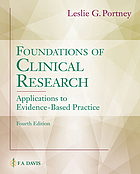Formulating a Clinical Question
PICO Framework
The PICO framework is a tool used to formulate clinical questions in a structured and focused way. It stands for:
- Patient/Problem
- Intervention
- Comparison
- Outcome
Example: In patients with chronic low back pain (P), does yoga (I) compared to standard physical therapy (C) improve pain management (O)?

SPICE Framework
SPICE is an acronym that stands for Setting, Perspective, Intervention, Comparison, and Evaluation. It's a framework often used in research, particularly in fields like healthcare, to develop research questions, especially in qualitative studies.
Example: Impact of telemedicine on patient satisfaction in rural areas.
-
Setting:
- Where? Rural healthcare clinics in the southeastern U.S.
- Key characteristics? Limited in-person services, high telemedicine use.
-
Perspective:
- Whose viewpoint? Patients using telemedicine.
- Why? To understand their satisfaction and challenges.
-
Intervention:
- What? Use of telemedicine for consultations.
- Expected impact? Improved access and satisfaction.
-
Comparison:
- Alternative? In-person consultations.
- Difference? Requires more time and travel.
-
Evaluation:
- Outcome? Patient satisfaction levels.
- How measured? Compare satisfaction between telemedicine users and in-person visitors.

SPIDER Framework
The SPIDER framework is used for developing qualitative research questions and stands for Sample, Phenomenon of Interest, Design, Evaluation, and Research type. Here's a brief explanation of each component:
- Sample: The group of individuals or entities involved in the study.
- Phenomenon of Interest: The specific experiences, behaviors, or processes being examined.
- Design: The structure or approach of the study used to investigate the phenomenon.
- Evaluation: The outcomes or results being observed and how their significance will be assessed.
- Research type: The nature of the research, such as qualitative, quantitative, or mixed methods.
Example: Exploring the experiences of nurses working in high-stress emergency departments.
-
Sample:
- Who? Registered nurses working in emergency departments.
- Selection criteria? Nurses with at least one year of experience in high-stress environments.
-
Phenomenon of Interest:
- What? Experiences and coping strategies of nurses dealing with high-stress situations.
- Why? To understand how stress impacts their work and well-being.
-
Design:
- How? Conduct in-depth interviews with nurses to gather qualitative data on their experiences.
- Structure? Semi-structured interviews to allow for detailed responses.
-
Evaluation:
- What? Themes related to stress management and job satisfaction.
- How? Analyze interview transcripts to identify common themes and patterns.
-
Research type:
- What? Qualitative research.
- Why? To gain deep insights into personal experiences and perceptions.







